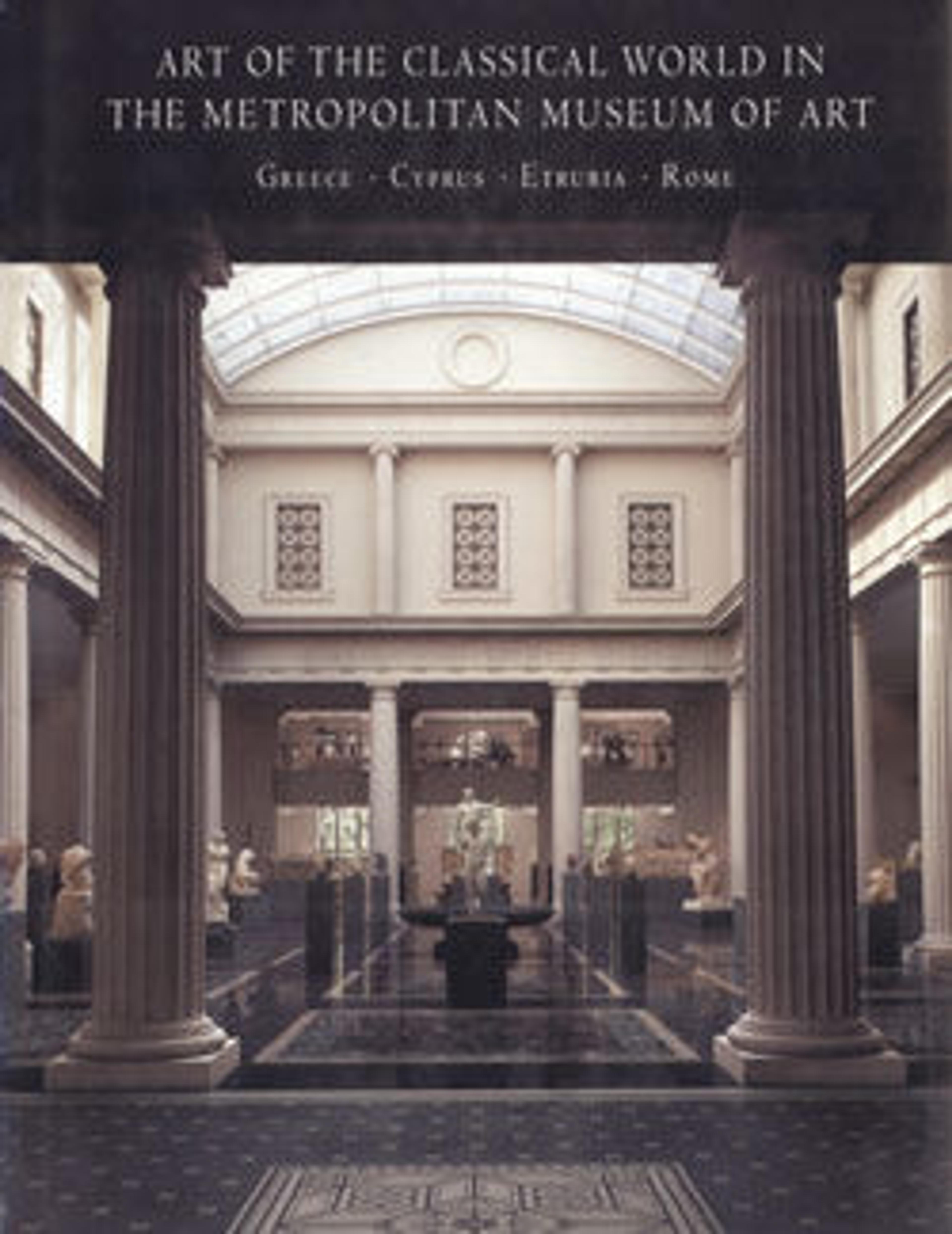Bronze hydria (water jar)
This is one of the earliest of this kind of Archaic Greek bronze hydriae to have survived. The handles are cast. Portions of the hammered bronze body are a modern restoration. The three handles are particularly decorative, especially for this early period. The vertical handle has a pair of lion heads at the top whose features are rendered with a combination of volumetric modeling and chasing. A woman's head, shown from the neck up, appears at the bottom. Six long, hatched braids frame her face on both sides and she wears a headdress known as a polos, on top of her head. The polos typically is worn by goddesses. Two half-spools extend perpendicularly from the woman's head on both sides, each ornamented with pairs of chased lines. The strap of the handle is covered with chased geometric patterns. The side handles have swan heads with long, rounded beaks at the outer edges. The straps of the handles and the half-spools that extend perpendicularly from the swan heads are ribbed with pairs of chased lines, as on the vertical handle.
Artwork Details
- Title: Bronze hydria (water jar)
- Period: Archaic
- Date: late 7th–early 6th century BCE
- Culture: Greek
- Medium: Bronze
- Dimensions: h: 17 in. (43.2 cm)
- Classification: Bronzes
- Credit Line: Purchase, David L. Klein Jr. Memorial Foundation Inc., The Joseph Rosen Foundation Inc., and Nicholas S. Zoullas Gifts, 1995
- Object Number: 1995.92
- Curatorial Department: Greek and Roman Art
More Artwork
Research Resources
The Met provides unparalleled resources for research and welcomes an international community of students and scholars. The Met's Open Access API is where creators and researchers can connect to the The Met collection. Open Access data and public domain images are available for unrestricted commercial and noncommercial use without permission or fee.
To request images under copyright and other restrictions, please use this Image Request form.
Feedback
We continue to research and examine historical and cultural context for objects in The Met collection. If you have comments or questions about this object record, please contact us using the form below. The Museum looks forward to receiving your comments.
